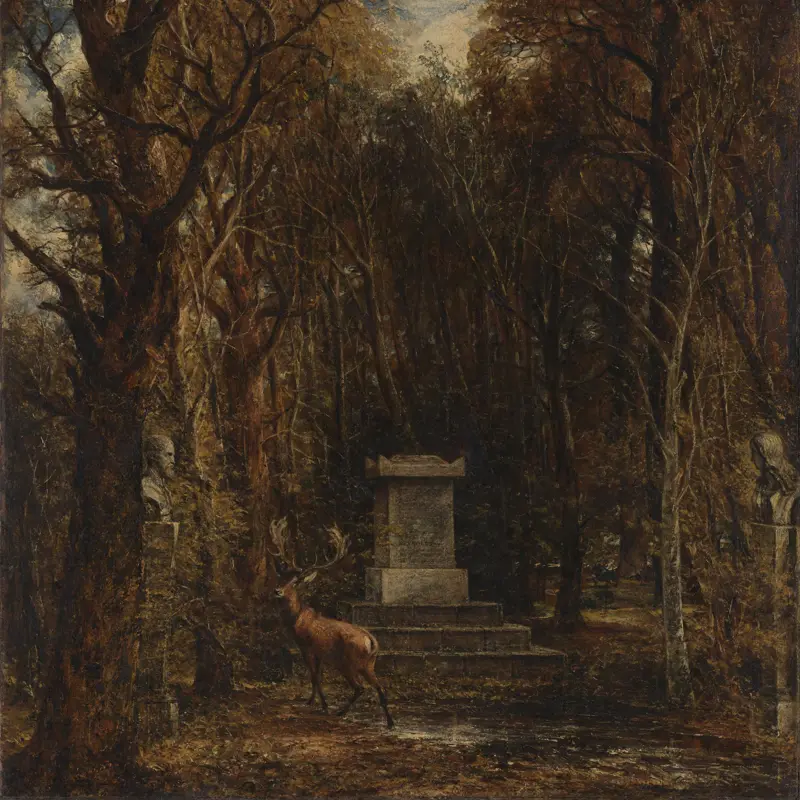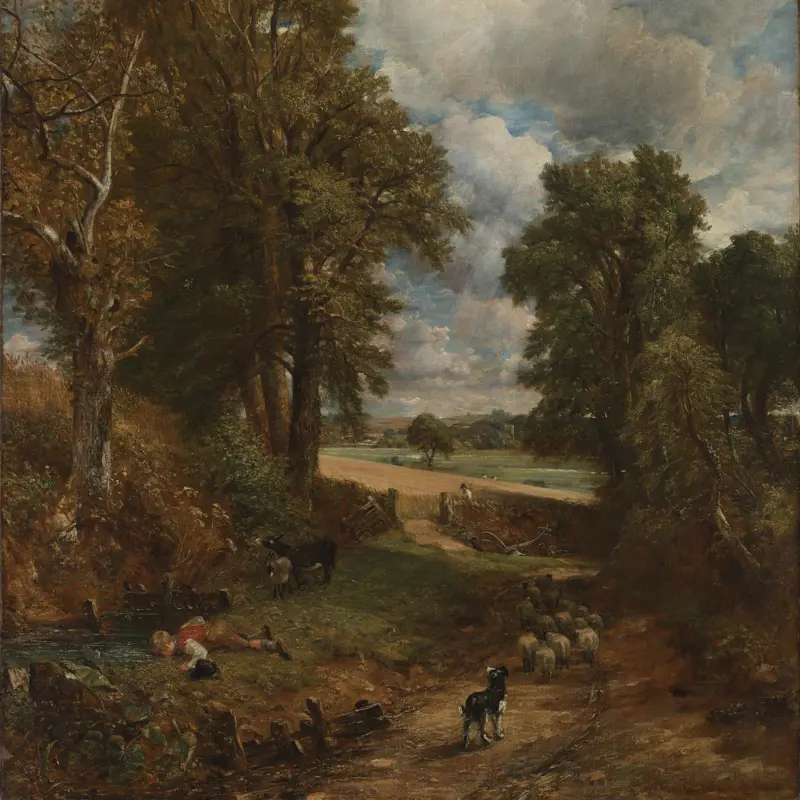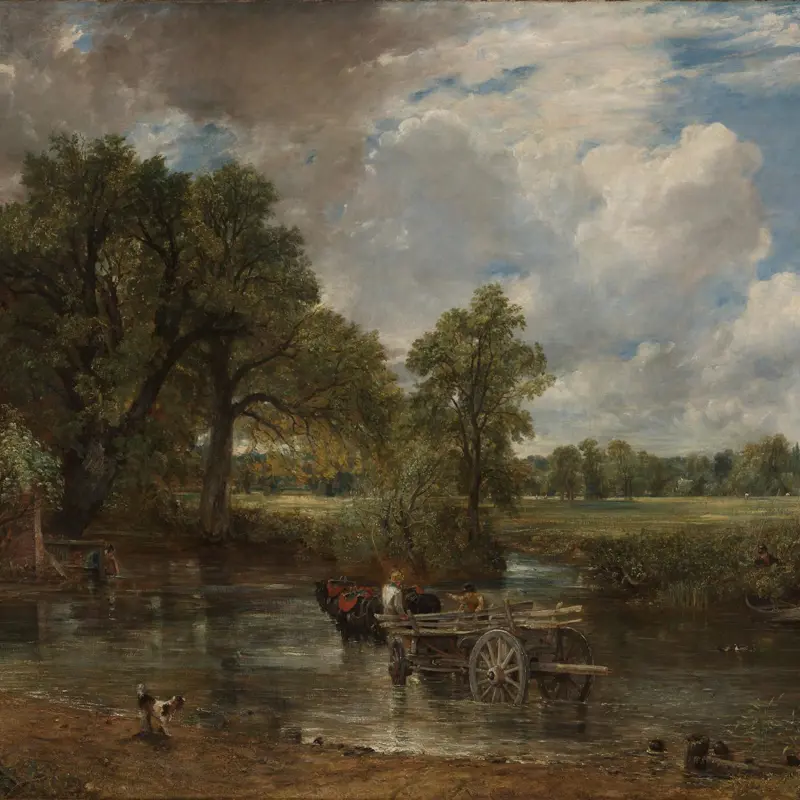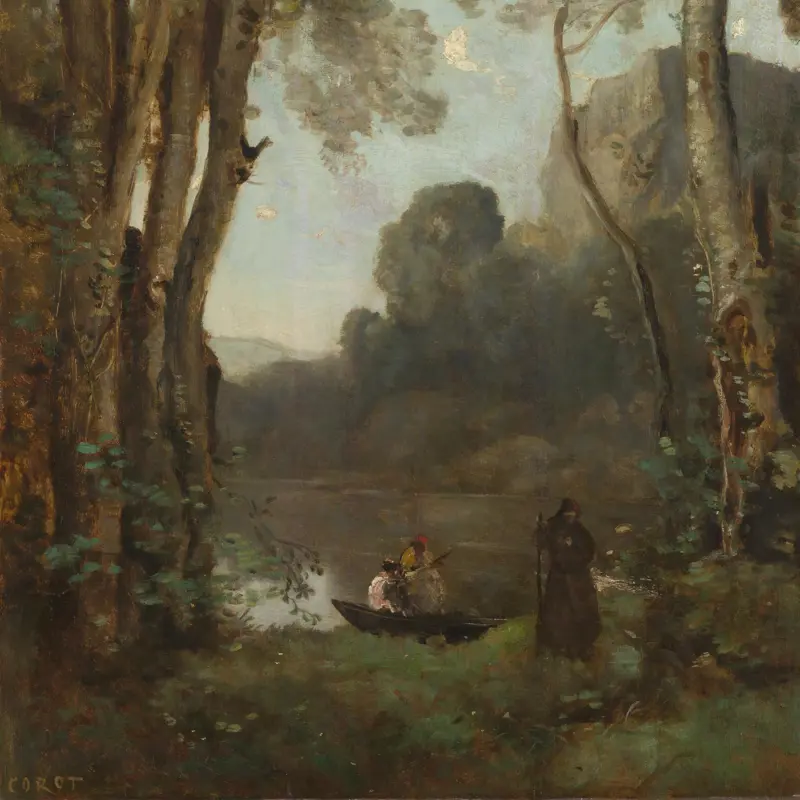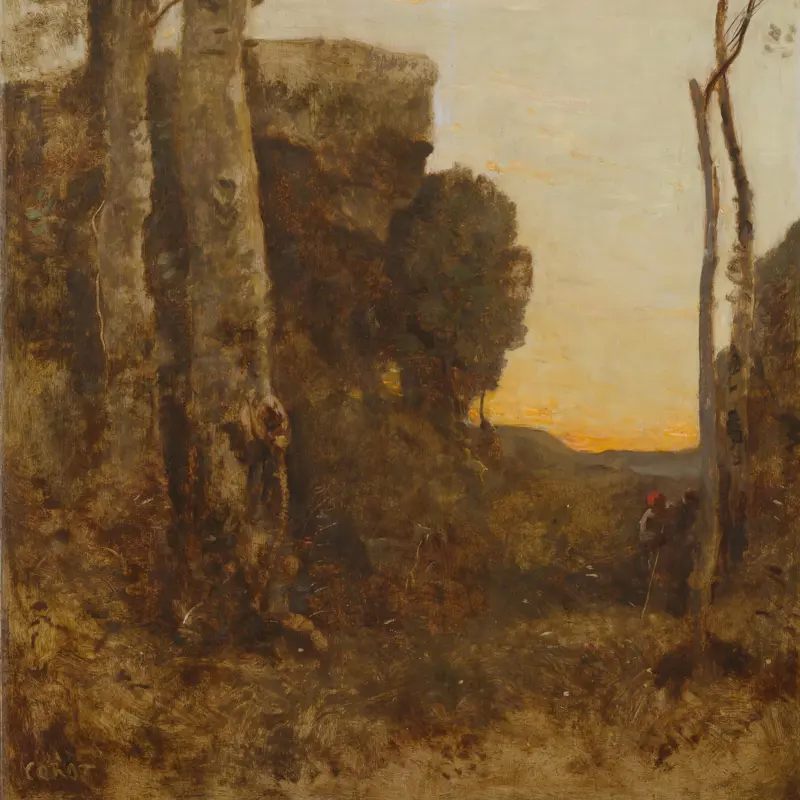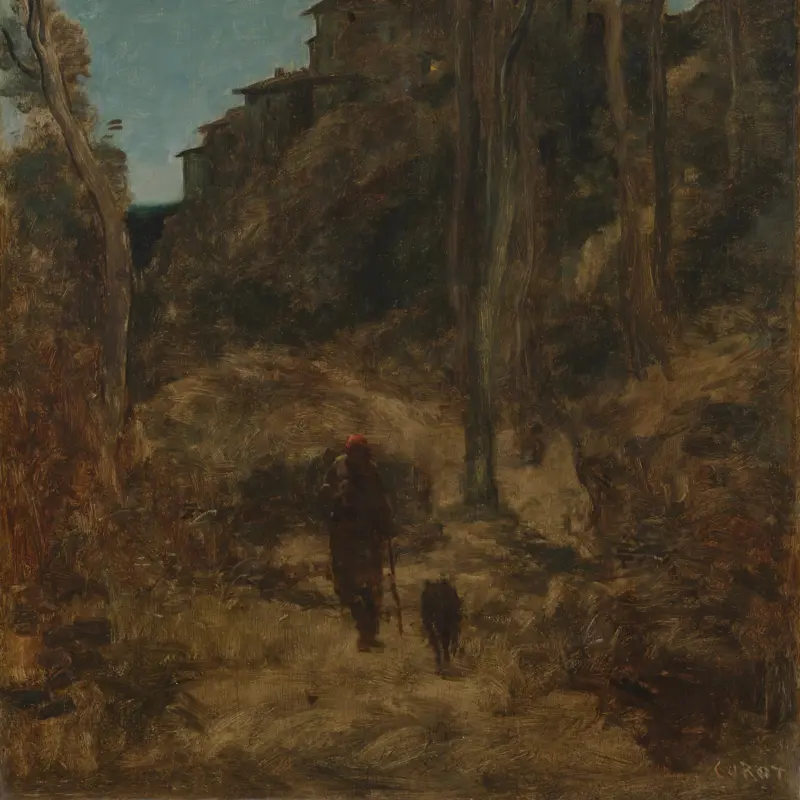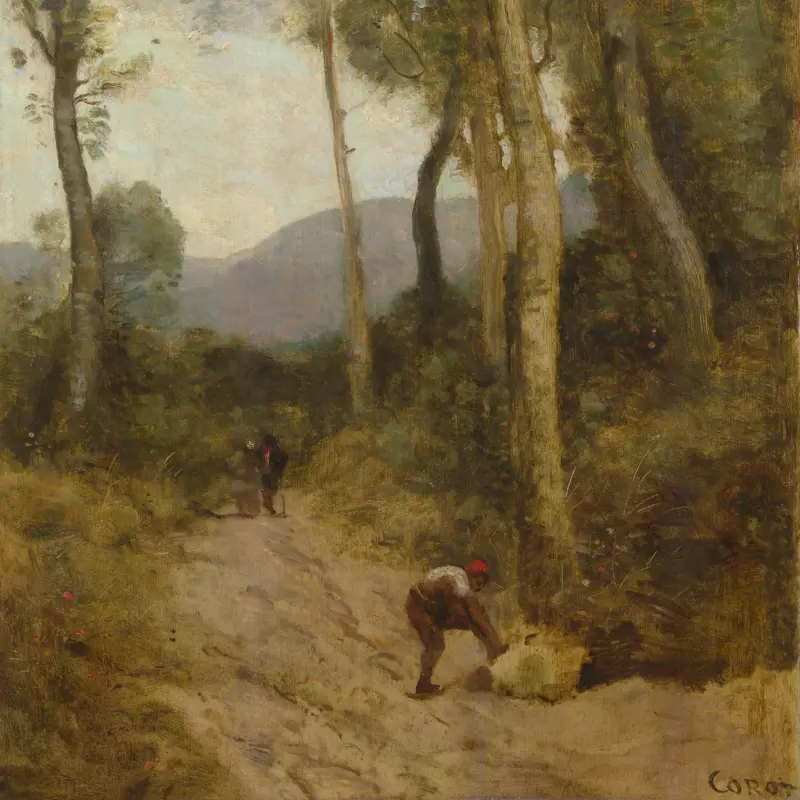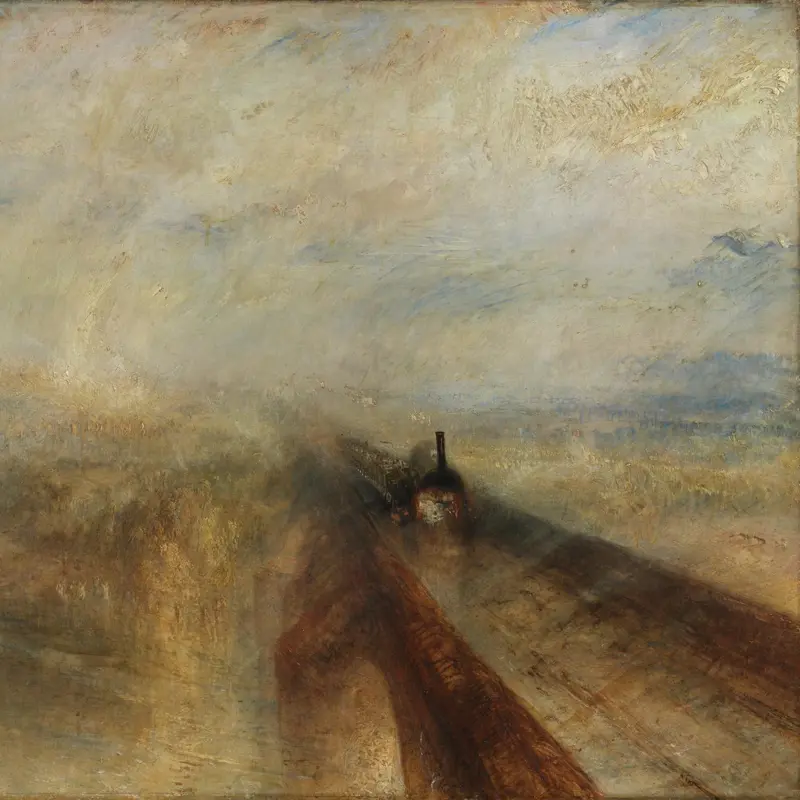British artists Joseph Mallord William Turner (1775–1851) and John Constable (1776–1837) sought to represent the truth of nature. In distinct ways they captured fleeting light effects and weather conditions. They were inspired by both the idealised landscapes of Claude (1604/5?–1682) and the first-hand observations of the Dutch 17th-century landscape painters. These examples also influenced later artists such as the Frenchman Jean-Baptiste-Camille Corot (1796–1875). Turner, Constable and Corot all combined the classical tradition of creating an ideal landscape with the plein-air practice of sketching outdoors.
Born in London, Turner entered the Royal Academy Schools at 14. After the Napoleonic Wars ended in 1815, he was able to travel through Europe painting landscapes and marine scenes. Later he recorded the changing modern world in The Fighting Temeraire and Rain, Steam and Speed, as sail and horsepower were overtaken by the coal-fired Industrial Age.
Constable grew up in East Bergholt in Suffolk and depicted this landscape throughout his life, recording its rural beauty. Corot was born in Paris and, after training in Rouen, journeyed through Europe immersing himself in nature and the subtle expression of light and shade. Constable, Corot and Turner were all to have an important influence on French landscape painting of the later 19th century.


